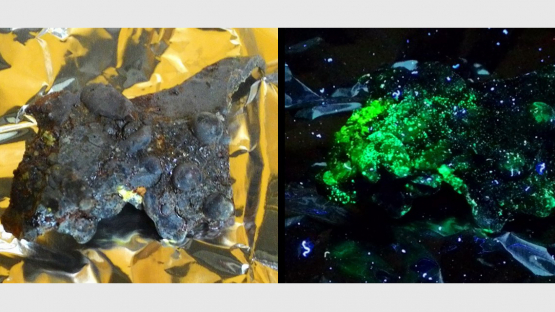IAEA-led international research on the management of severely damaged spent nuclear fuel is providing key lessons learned from sites such as Fukushima Daiichi, Chornobyl and Three Mile Island and demonstrating the value of global scientific collaboration.
The Great East Japan earthquake and tsunami that struck the eastern coast of Japan on 11 March 2011 prevented emergency power from cooling the cores of three reactor units at the plant, resulting in overheated and melted fuel. Japanese authorities have since been studying the fuel debris, also known as corium, using innovative robotic technology and remote inspection tools to explore its location and characterize samples as part of efforts to eventually retrieve and safely and securely dispose of the material.
While research and development to support these efforts are case specific, the IAEA is gathering international experiences and lessons learned through the coordinated research project (CRP) Management of Severely Damaged Spent Fuel and Corium. Experts from seven countries are part of the CRP launched in 2016.
Retrieving the fuel debris is the most challenging part of decommissioning efforts at the Fukushima Daiichi plant, according to Tadahiro Washiya of the Division of Fuel Debris Handling, Collaborative Laboratories for Advanced Decommissioning Science (CLADS) at the Japan Atomic Energy Agency. “An investigation of the damaged Unit 1 (F-1) was carried out by robots and remote inspection tools; however, there are many uncertainties in understanding the conditions of the fuel debris,” including its composition and mechanical properties, Washiya said.
Knowledge gained from the 1986 accident at Chornobyl is already supporting efforts at Fukushima Daiichi, said Boris Burakov of the Khlopin Radium Institute in St Peterburg, Russia, which hosted a training seminar with Japanese experts using real Chornobyl fuel debris samples in October 2019.
“The results of the material study of Chornobyl samples are very important for predicting the main properties of the fuel debris at Fukushima Daiichi F-1” as the fuel debris at both sites share several expected similarities, Burakov said. While significant differences between the two are also anticipated, similarities include lava-like materials, porous fuel produced by lava contacting water and hot particles with fuel and corium matrices.
Experts from Sellafield, the UK’s largest nuclear site and the hub of its nuclear decommissioning efforts, is also providing important input having successfully managed a variety of damaged or non-standard fuel received by agreement from third parties, said Antonia Callaghan, Senior Technical Advisor of Spent Fuel Management Ponds Technical Team at Sellafield. This included fuel assemblies with a variety of issues such as damaged cladding, fractured fuel pins or fuel containing non-standard components incompatible with reprocessing. “The lessons learned were that fuel with varying types and degree of damage could be successfully managed for reprocessing or storage by judicious physical remediation or appropriate adjustment of processing stages,” she said.
Experience in managing the recovery of corium at the Three Mile Island Nuclear Power Plant in the United States, where fuel partly melted after an accident in 1979, as well as its preparation for long term storage is another important contribution to the study. “The information shared on monitoring the fuel since its emplacement in storage is particularly valuable and timely,” said David Hambley, Laboratory Fellow for Spent Fuel Management and Disposal at the UK’s National Nuclear Laboratory.
Fuel debris is in general any fuel rod or assembly material that cannot be retrieved as part of a fuel assembly. This may include rod parts, fuel particulate, or hardware parts. Key activities in safely managing such debris include the prevention of radiological release or exposure, ensuring that the fuel debris maintains sub-criticality and ensuring its retrievability. Fuel properties are altered in severe accident conditions that may result in a melted material, known as corium, that can further change over time.
“The management of severely damaged spent nuclear fuel is an extremely complex undertaking, and this study brings together the world’s most relevant experience and expertise in this area, demonstrating the importance of global scientific collaboration,” said Christophe Xerri, Director of the IAEA’s Division of Nuclear Fuel Cycle and Waste Technology. “It will provide a lasting resource for the nuclear energy community in general as well as for Japan, which is facing a unique challenge in managing fuel debris towards Fukushima Daiichi site decommissioning.”
Upon invitation by the Government of Japan, the IAEA has assisted the country in reviewing its efforts to plan and implement the decommissioning of the Fukushima Daiichi plant. The Agency provides a variety support to countries in the management of radioactive waste and spent nuclear fuel, including through peer review services, meetings and trainings and Nuclear Energy Series publications and other technical reports. In November, the IAEA will hold the International Conference on Radioactive Waste Management: Solutions for a Sustainable Future, which will showcase solutions already available or at an advanced stage of development throughout the world.





